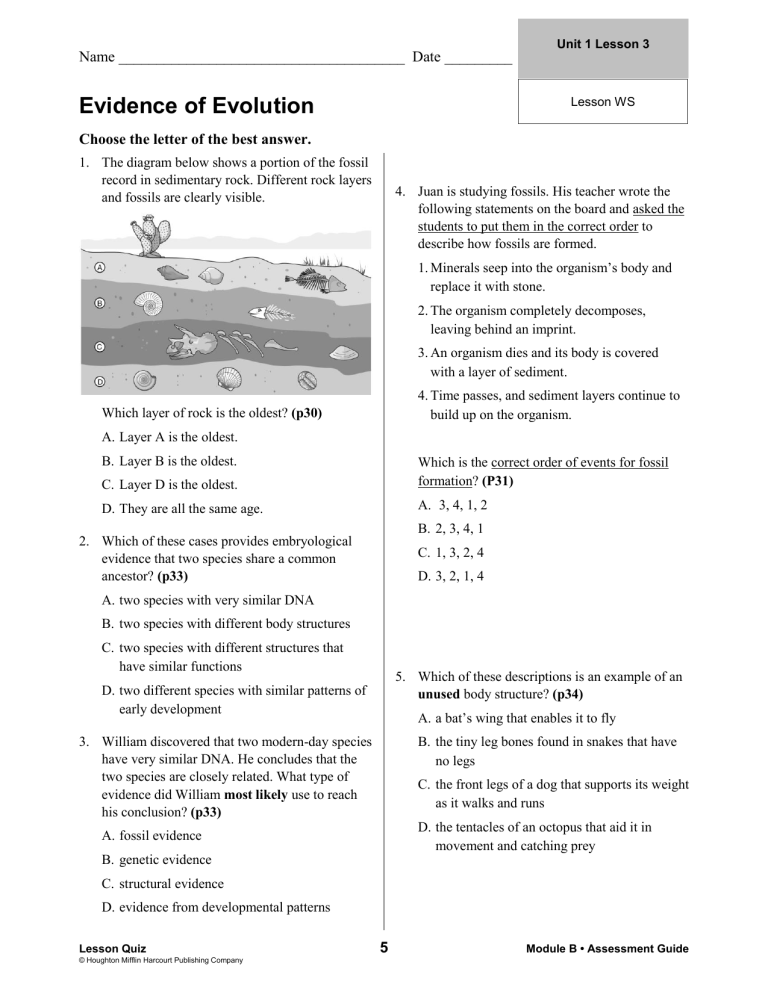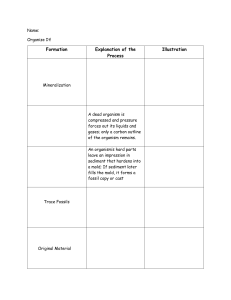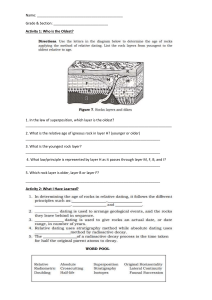
Name ______________________________________ Date _________ Evidence of Evolution Unit 1 Lesson 3 Lesson WS Choose the letter of the best answer. 1. The diagram below shows a portion of the fossil record in sedimentary rock. Different rock layers and fossils are clearly visible. 4. Juan is studying fossils. His teacher wrote the following statements on the board and asked the students to put them in the correct order to describe how fossils are formed. 1. Minerals seep into the organism’s body and replace it with stone. 2. The organism completely decomposes, leaving behind an imprint. 3. An organism dies and its body is covered with a layer of sediment. 4. Time passes, and sediment layers continue to build up on the organism. Which layer of rock is the oldest? (p30) A. Layer A is the oldest. B. Layer B is the oldest. C. Layer D is the oldest. Which is the correct order of events for fossil formation? (P31) D. They are all the same age. A. 3, 4, 1, 2 B. 2, 3, 4, 1 2. Which of these cases provides embryological evidence that two species share a common ancestor? (p33) C. 1, 3, 2, 4 D. 3, 2, 1, 4 A. two species with very similar DNA B. two species with different body structures C. two species with different structures that have similar functions 5. Which of these descriptions is an example of an unused body structure? (p34) D. two different species with similar patterns of early development A. a bat’s wing that enables it to fly 3. William discovered that two modern-day species have very similar DNA. He concludes that the two species are closely related. What type of evidence did William most likely use to reach his conclusion? (p33) B. the tiny leg bones found in snakes that have no legs C. the front legs of a dog that supports its weight as it walks and runs D. the tentacles of an octopus that aid it in movement and catching prey A. fossil evidence B. genetic evidence C. structural evidence D. evidence from developmental patterns Lesson Quiz © Houghton Mifflin Harcourt Publishing Company 5 Module B • Assessment Guide





